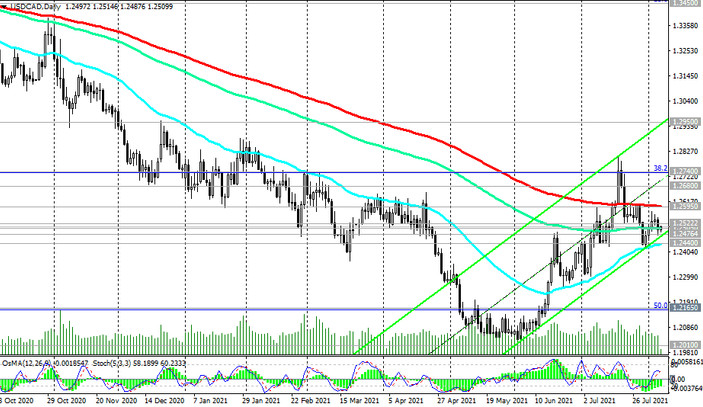The undisputed focus of investors' attention today is the publication (at 12:30 GMT) of the monthly report of the US Department of Labor, as it can significantly influence the subsequent decisions of the Fed regarding the stimulus program. Economists forecast 870,000 new jobs outside the US agricultural sector in July, while unemployment fell 0.2% to 5.7%, and average hourly wages rose another 0.3%. These are very positive values, and they should support the dollar, provided that they coincide with the forecast or turn out to be better than it.
Yesterday's data on the number of jobless claims can be generally called positive. As expected, they showed that the number of jobless claims fell last week. The number of initial claims for unemployment benefits fell slightly, to 385,000, although it remained almost twice the pre-coronavirus average level.
In recent days, key US stock indices and dollar quotes have fluctuated amid fears about the possibility of a new slowdown in the recovery due to an increase in cases of new coronavirus infections.
So, Anthony Fauci, chief medical adviser to the Biden administration, recently announced that he did not expect the return of lockdowns, but warned of an impending worsening of the situation with the disease due to the spread of a more infectious strain.
Since the end of May, the number of initial jobless claims has fluctuated between 368,000 and 424,000. This is above the pre-crisis level, albeit below the highs reached at the beginning of the pandemic. In 2019, before the Covid-19 pandemic began, the average weekly initial filings were 218,000.
The ADP report on employment in the private sector released on the eve indicated that 330 thousand jobs were created in the private sector of the US economy in July. The forecast assumed an increase of 695 thousand after a similar increase (+680 thousand) in June. The dollar fell sharply following the release of the ADP report as it diminished the likelihood of an earlier start to the Fed's stimulus policy rollback.
If today's official data from the US Department of Labor with data for July also turns out to be disappointing, then this will again postpone the start of curtailing the Fed's stimulus programs indefinitely. In this case, the dollar may decline sharply. The worse the expectations are for the data on the labor market today, the more the dollar will decline. But in any case, a sharp increase in volatility during the period of publication of this data is guaranteed. Probably the most cautious investors will choose to stay out of the market during this time frame.
But the greatest volatility is expected today in the USD / CAD pair, since the Statistics Canada will publish its data on the labor market simultaneously with the US Department of Labor (recall at 12:30 GMT).

Unemployment in Canada is reluctant to drop to pre-coronavirus levels. Last month, it was 7.8% (in the period before the pandemic was consistently below the 6.0% level), which is explained by the massive closures of enterprises in the previous months due to the coronavirus and layoffs. If unemployment continues to rise, the Canadian dollar will decline. If the data turn out to be better than the previous values, the Canadian dollar will strengthen. A decrease in the unemployment rate is a positive factor for CAD, an increase in unemployment is a negative factor.
In July, Canadian unemployment is expected to fall to 7.4% from 7.8% last month, as we noted above, and the number of employed is up 175,000. This is moderately positive data. However, if it turns out to be significantly worse than the forecast, then CAD may react to them with a strong short-term decline.
At the same time, speaking of the outlook for the Canadian dollar, it is receiving strong support from rising oil prices. Canada is the largest exporter of oil. The share of oil and petroleum products in Canada's exports is approximately 22%. There is now some uncertainty in the oil market around oil demand due to the spread of the delta strain of the coronavirus. However, many leading economists predict an increase in demand in the second half of 2021 due to weakening quarantine restrictions and an increase in vaccination rates. This may have a positive effect on the quotes of the Canadian dollar. Despite OPEC+ plans to increase production, the supply in the oil market is still "slightly insufficient", oil market analysts say. Thus, long-term investments in the Canadian dollar still look attractive.





